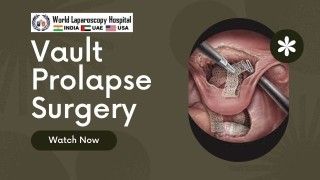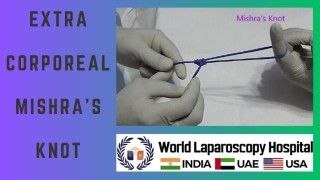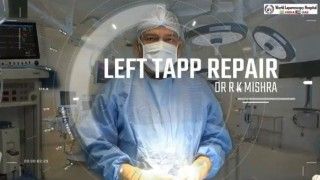Laparoscopic Pediatric Inguinal Hernia Repair | Skin-to-Skin Technique at WLH
Add to
Share
18 views
Report
1 day ago
Description
Laparoscopic Pediatric Inguinal Hernia Repair is one of the most commonly performed minimally invasive procedures in children. At World Laparoscopy Hospital (WLH), this surgery is performed with utmost precision under the expert guidance of Dr. R. K. Mishra, using the latest laparoscopic technology and child-safe techniques. The approach is designed to minimize pain, scarring, and recurrence while ensuring quick recovery and excellent cosmetic outcomes. Introduction Inguinal hernia in children is a congenital condition resulting from the failure of closure of the processus vaginalis. Traditionally repaired through open surgery, the laparoscopic technique now offers superior visualization, reduced tissue trauma, and the ability to inspect and treat the contralateral side in the same sitting. WLH’s “Skin-to-Skin” laparoscopic approach ensures a smooth, standardized, and safe surgical experience from the first incision to skin closure. Step-by-Step Surgical Technique 1. Preoperative Preparation Patient Position: The child is placed in a supine position with slight Trendelenburg tilt to facilitate bowel displacement. Anesthesia: General anesthesia with endotracheal intubation ensures a secure airway and pain-free procedure. Antiseptic Preparation: The entire lower abdomen and groin region are cleaned and draped sterilely. 2. Port Placement (Skin-to-Skin Entry) A 5 mm umbilical incision is made for the primary port. Pneumoperitoneum is established using CO₂ at low pressure (8–10 mmHg). Two 3 mm working ports are introduced under vision—one in each lower quadrant. The laparoscopic camera provides a magnified view of both internal inguinal rings, enabling simultaneous assessment of bilateral hernias. 3. Identification of Hernia Sac The peritoneum at the deep inguinal ring is inspected. The hernia sac, seen as a peritoneal bulge, is gently dissected using fine atraumatic instruments. Care is taken to preserve the vas deferens and spermatic vessels. 4. High Ligation of the Sac Using non-absorbable suture (e.g., Ethibond 2-0 or Prolene 3-0), a peritoneal purse-string suture is placed circumferentially around the internal ring. The sac is closed securely under direct vision without injuring nearby structures. In cases of bilateral hernia, the opposite side can be repaired through the same laparoscopic access without additional incisions. 5. Desufflation and Port Closure After confirming hemostasis and ensuring both internal rings are securely closed, the pneumoperitoneum is released. The umbilical and port sites are closed with absorbable sutures. The skin is sealed with cosmetic subcuticular sutures or surgical glue, completing the “skin-to-skin” phase with minimal scarring. 6. Postoperative Care The child is observed for a few hours and can often be discharged the same day. Oral fluids are started within 2–3 hours post-surgery. Minimal pain, no dressing change, and quick return to normal activities are the hallmark advantages. Conclusion The Skin-to-Skin Laparoscopic Pediatric Inguinal Hernia Repair at World Laparoscopy Hospital represents the pinnacle of precision, safety, and surgical excellence in pediatric minimal access surgery. Under the mentorship of Dr. R. K. Mishra, surgeons are trained to perform this delicate procedure with skill, compassion, and confidence — ensuring that young patients receive the best possible outcomes with the least possible trauma.
Similar Videos






